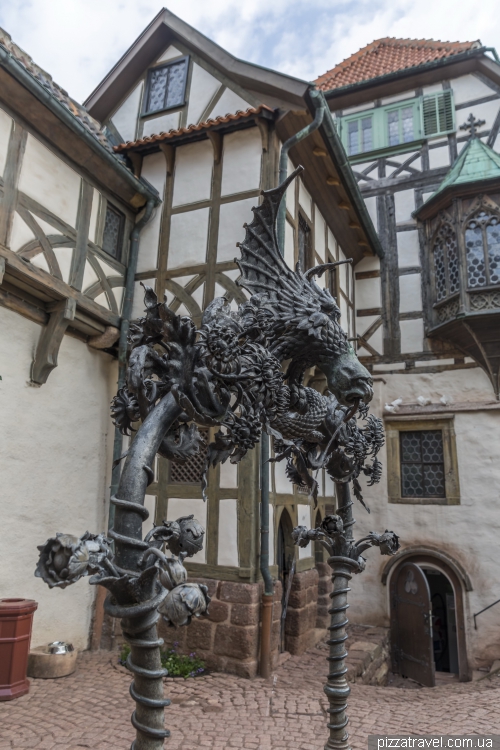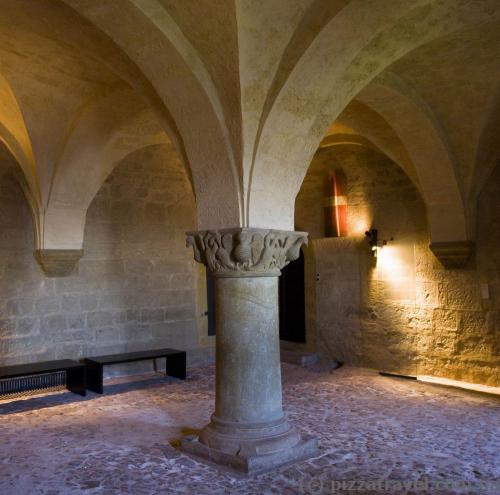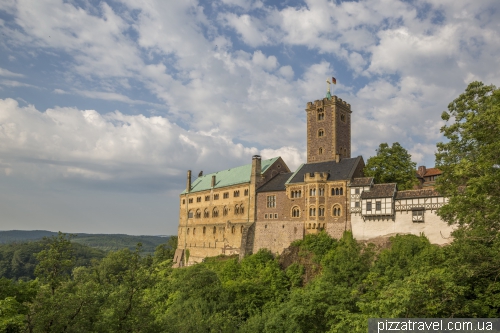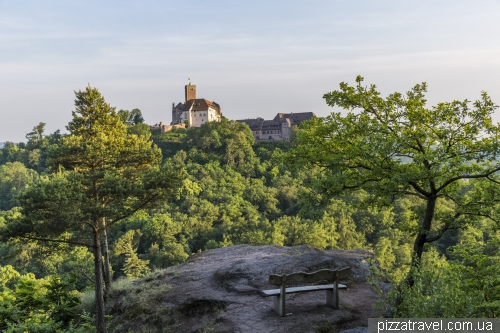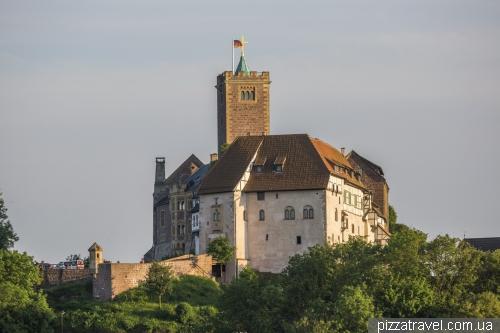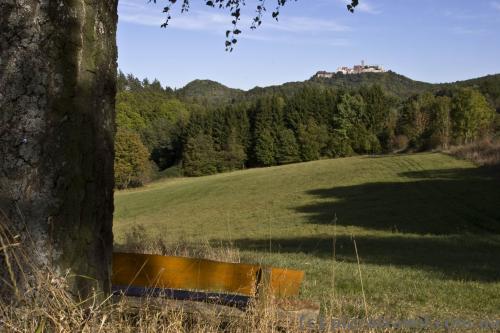The Wartburg Castle has a special place in German history. This is one of the oldest castles; according to a legend, it was founded in 1067.
The name, incidentally, comes from a legend about the foundation. Count Ludwig the Jumper was out hunting with his escort and saw one of the hills. He exclaimed, "Wait, mountain, you must hold my castle" (in German Wart, der Berg!).
It's interesting that the castle didn't take part in big battles and is better known by various legends. Castle visitors remember it primarily because of the legends. For example, that the count could not build the castle, because the land didn't belong to him. So at night he ordered to bring thousands of buckets of earth from his home and started to build the castle on "his" land.
Although the castle looks old, many of its buildings were built in the last century. The oldest parts are the palace and distant tower, on which you can get up and look around.
Hint: Take the tour in English (at 1:30 pm). It's very likely there will be not many people, for example, it was 8 people in our group, while in the German groups about 40.
The need for restoration of the castle and arrangement of the museum was told by Goethe, but it happened later. Reconstruction of the castle is still going on. In the restored and original rooms you can see how the nobles lived in the XII-XIII centuries. I have to say, they lived without comfort, it was hard to live in those times even for counts.
The heyday of the castle was in the beginning of the XIII century, in the time of Good Ludwig III and his brother Herman I. There is a legend about those times, contest of six minnesingers. Or maybe not a legend, who knows.
So, the minnesingers read their poems to Landgrave Hermann I, and the loser was to be executed. Five of them glorified the count but one of them decided to dedicate poems to an Austrian duke, and, therefore, lost. He was saved by the second wife of Landgraf Sophia von Wittelsbach, who persuaded her husband to give the singer a second chance over a year. A year later, using the advice of the Hungarian magician Klingsor, the singer read another text :) In his poems he predicted the birth of the great Princess Elizabeth.
The minnesinger's prediction was fulfilled one year later, in 1207. The King of Hungary had a girl who was named Elizabeth. Herman I brought her to Wartburg at the age of 4. She was engaged to his son, Landgraf Holy Louis IV, who was 7 years older.
A number of legends are associated with Saint Elizabeth. In one of them the husband, who didn't approve his wife's charity, found her with a basket full of bread for the poor. But when Elizabeth showed the contents of the basket, there were roses for the castle.
In 1227, Ludwig became ill with fever and died. His brother and mother-in-law kicked out Elizabeth from the castle with three children. She went to the convent, where she was declared a Saint. Died at the age of 24, people didn't live long at those times.
In 1902-1906 Wilhelm II ordered to restore one of the rooms: it was covered with mosaics with scenes from Elizabeth's life.
In the XV century, when the last Ludvig died, the castle lost its former glory, but nevertheless it took part in important events. Within 10 months the Elector of Saxony, Frederick the Wise III, hid in the castle the most significant German preacher Martin Luther, who had escaped from the Catholic Church. Luther translated the New Testament for the first time from the original, as before it was translated only from Latin. He used 18 dialects of the German language, and it allowed the masses to read the translation. The book with Martin Luther's translation is kept in the castle museum.
The preacher lived in a castle in a small room that is available to visitors. Once he threw an inkwell at the wall, trying to hit the Devil :) Later, many pilgrims dismantled the wall as souvenirs. By the way, Martin Luther's room was identified by autographs of pilgrims.
In 1815, after the Napoleonic wars, Germany was divided into separate parts. The Burschenschaft movement appeared, advocating unification of the country. 500 students came to the castle from the University of Jena on October 18, 1817 and talked to the representatives of 35 counties regarding unification. The students were dressed in the tri-color uniforms. Later these colors became the national flag of the united Germany.
99% of the castle photos are made from a small viewpoint in front of it.
We will describe the other viewpoints. The trail to the first one starts here N 50 58.143 E 10 18.447, the viewpoint is in 200 meters on the rock N 50 58.207 E 10 18.427.
To get to the second place you need to go down to the rail and car road. The lookout is located on a large private field, approximately here N 50 57.936 E 10 17.456. This place is not for everyone, so if you do not like adventure, then do not go here.
Another lookout is located near the student fraternity monument (Burschenschaftsdenkmal) here N 50 57.913 E 10 19.758. You can walk from Eisenach or drive by car, parking is here N 50 58.004 E 10 20.000. We arrived at sunset.
Getting there: You need to go to Eisenach, use bahn.de. From the train station take the bus #10 or #13. There is a Kombi-Ticket Wartburg that includes travel by regional trains (all except IC/ICE) in Thuringia, as well as from several towns in neighboring areas: Göttingen, Halle, Leipzig, Lichtenfels, Schweinfurt, Bad Kissingen, Fulda, and Kassel. Cost of bus to the castle and a guided tour are also included. Such ticket costs 24 euros (2013).
You can walk to the castle from Eisenach, first along the Schloßberg Street, and then along the forest path. Just mind the steep rise.
Parking near the castle is only paid, here N 50 58.069 E 10 18.248.






